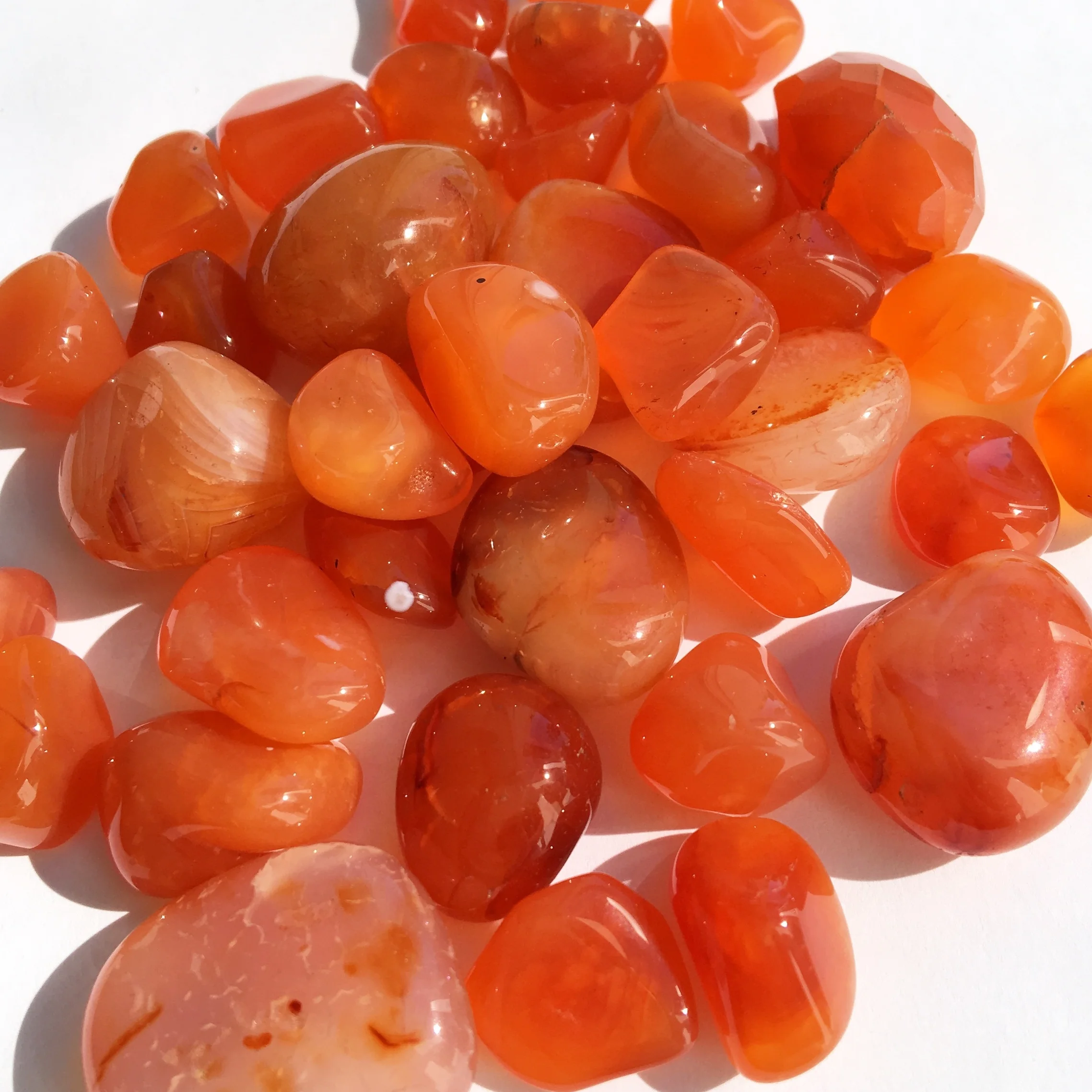(1) Variety of cryptocrystalline form of silica, composed of very fine intergrowths of the minerals quartz and moganite. [2] These are both silica minerals, but they differ in that quartz has a trigonal crystal structure, while moganite is monoclinic.
(1) In ancient Egypt, Carnelian was thought to be the stone of form and design worn by master architects, to show their rank of builder. (2) Ancient warriors wore Carnelian around their neck for courage and physical power to conquer their enemies. (3) Alchemists of the Middle Ages used it as a boiling stone to activate the energy of other Chalcedonies to transform their energy into useful form. (4) In ancient Egypt, hieroglyphic texts from the Book of the Dead were engraved on amulets made from Carnelian to procure a safe passage in the afterlife. (5) Early Babylonian cylinder amulets were also made from this stone.

